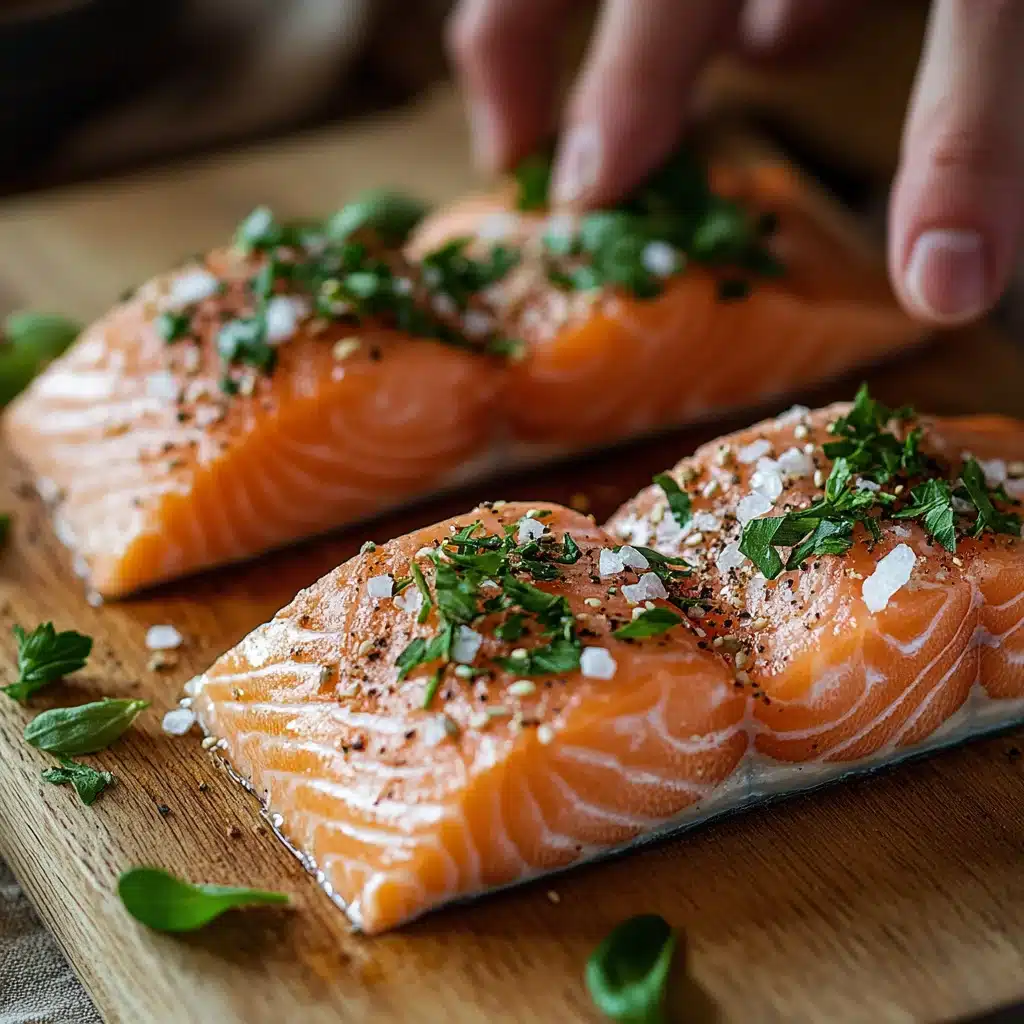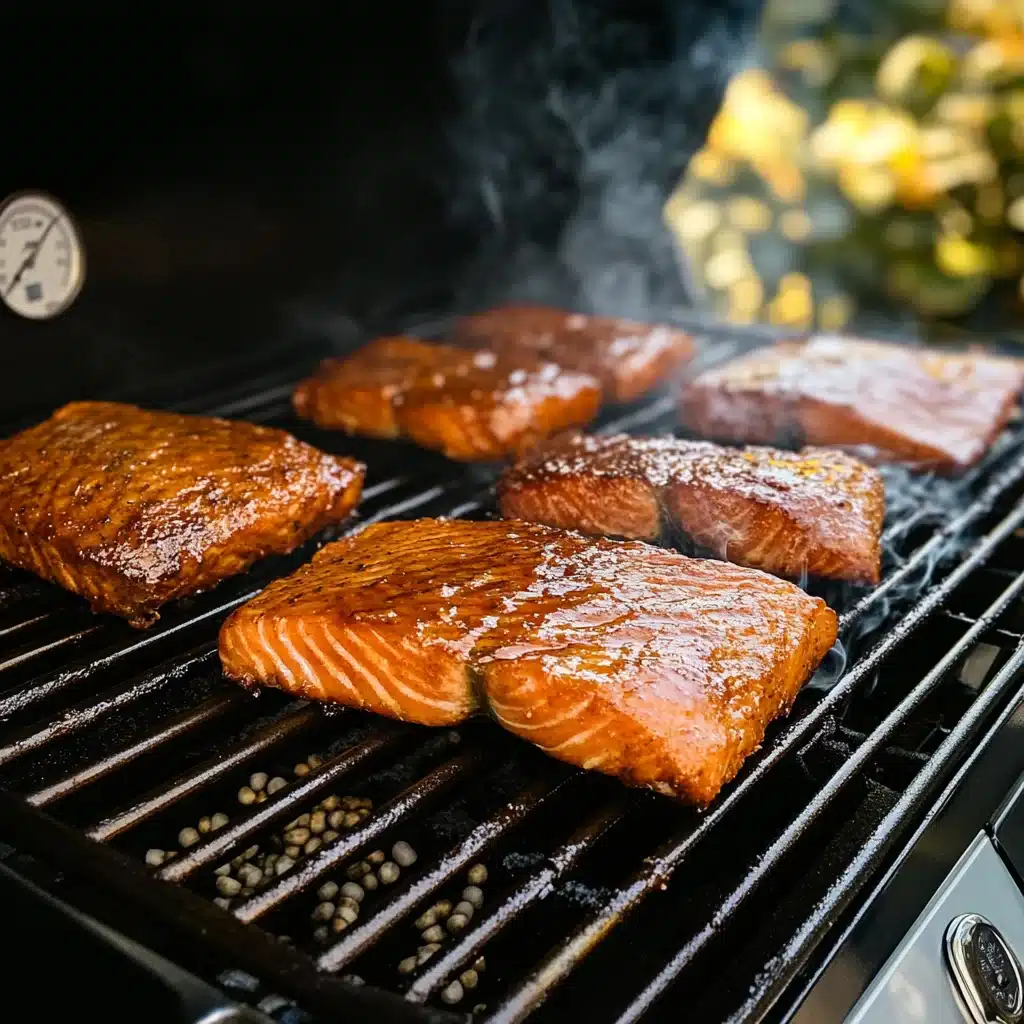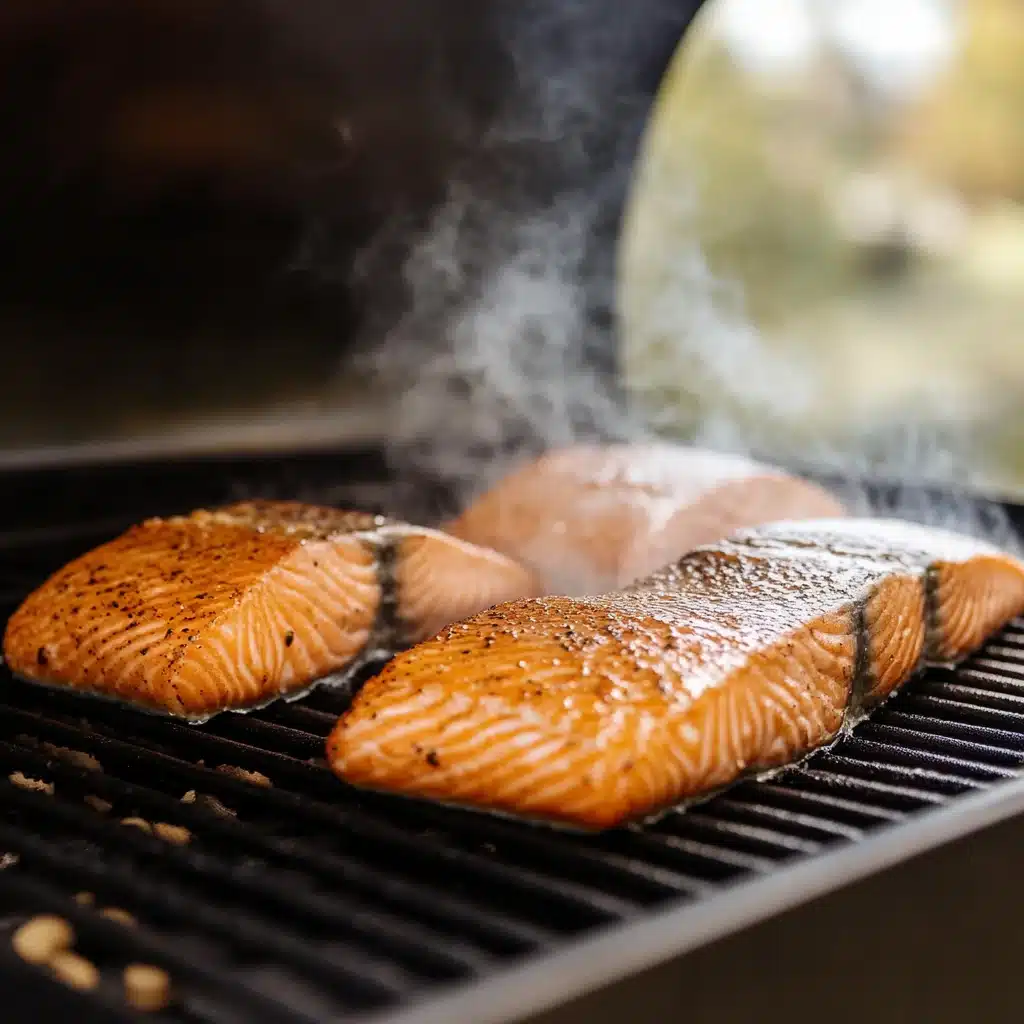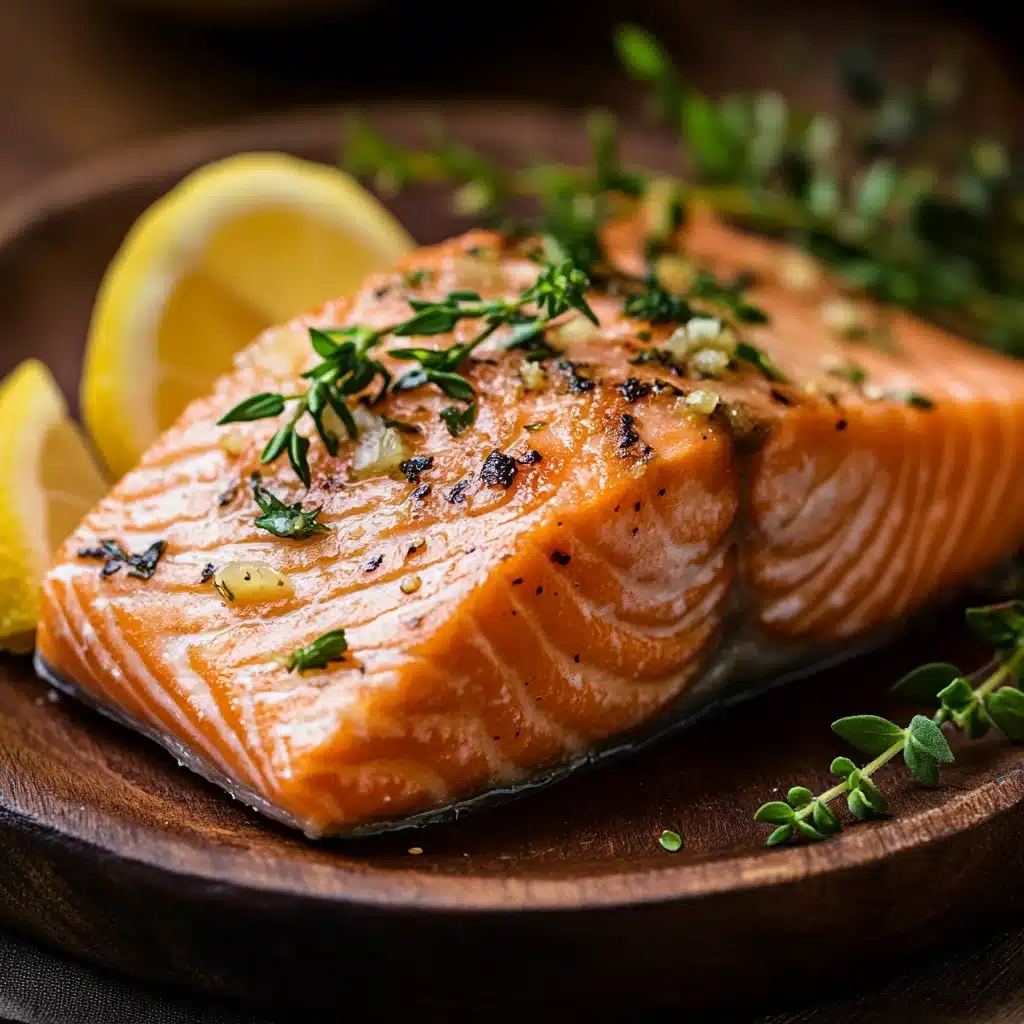Pellet smoker recipes are the secret to unlocking extraordinary flavors in your cooking. I remember the first time I tried smoking salmon on a pellet smoker — it was a beautiful sunny afternoon, and I was a bit nervous. Would the salmon come out too dry? Or maybe it wouldn’t pick up enough of that smoky flavor? But as the rich aroma of the wood pellets filled the air, I knew I was on the right track.
The ease and consistency of a pellet smoker made it the perfect tool for this delicate fish. Pellet smoker recipes allow you to experiment with various wood blends, creating tender, juicy dishes like never before. It’s the kind of cooking that brings people together, filling the air with irresistible scents that make everyone gather around to share a meal.
What You’ll Need for Smoking Salmon on a Pellet Smoker
Before you start smoking your salmon to perfection, it’s essential to gather the necessary ingredients and set up your pellet smoker correctly. Pellet smokers are known for their ease of use and versatility, but knowing how to set them up and choosing the right ingredients is crucial for achieving the best results in your pellet smoker recipes.
Ingredients
The foundation of any great smoked salmon recipe lies in the quality of your ingredients. Here’s what you’ll need for this particular pellet smoker recipe:
- Fresh Salmon Fillets: Choose high-quality, fresh salmon fillets. Wild-caught salmon tends to have a richer flavor compared to farmed salmon. Look for fillets with a vibrant, deep red-orange color and firm texture. If you prefer, you can use whole sides of salmon, which will require a bit more preparation, but the results are just as spectacular.
- Seasonings and Marinade:
- Salt and Pepper: The basic seasoning you’ll need for smoked salmon. The salt helps to draw out moisture and firm up the fish, while pepper adds a mild kick.
- Brown Sugar: A touch of brown sugar creates a sweet contrast to the smoky flavor and helps form a caramelized crust.
- Garlic Powder: This adds an earthy depth to the flavor profile.
- Herbs: Fresh dill is the classic herb for salmon, but you can also experiment with thyme, rosemary, or even lemon zest for a fresh citrusy touch.
- Soy Sauce or Maple Syrup: Some recipes call for a soy sauce glaze or a drizzle of maple syrup for a sweet, umami-packed finish.
- Wood Pellets: The type of wood pellets you choose will significantly impact the final flavor of your salmon. For a delicate and mild flavor, alder wood is traditionally used for smoking fish, particularly salmon. Applewood also offers a sweet, light smoky flavor that complements the fish well. If you prefer something stronger, hickory or mesquite can also be used, but be careful as they can overpower the subtle taste of the salmon.
Pellet Smoker Setup
Setting up your pellet smoker correctly ensures that you achieve the ideal temperature and maintain a consistent smoke. Here’s how to set up your smoker for salmon:
- Choosing the Right Pellet Smoker: Pellet smokers are incredibly user-friendly, and most models come with precise temperature controls that are perfect for smoking fish. If you’re using a pellet grill for the first time, make sure your smoker can reach a consistent temperature of around 225°F — this is the ideal temperature for smoking salmon, allowing the fish to cook slowly and absorb the full flavor of the smoke. Pellet smoker recipes work best when the smoker maintains a consistent temperature, ensuring perfect results.
- Preheating the Smoker: Before placing the salmon on the grill, preheat your smoker. This ensures that the smoker reaches the right temperature for cooking the fish. Turn on your pellet smoker and set it to 225°F. Allow it to heat up for about 10-15 minutes. It’s important to allow the wood pellets to begin smoldering, creating that delicious smoky flavor that will permeate the fish. If your smoker has a smoke setting, use it to get the most intense smokiness.
- Pellet Selection: When it comes to smoking fish, lighter, fruitwood-based pellets like alder or applewood are your best options. They provide a mild smoke that won’t overpower the natural flavor of the salmon. For a richer taste, you can experiment with other wood types, but always keep in mind that a delicate fish like salmon doesn’t require heavy smoking.
- Smoker Tray and Heat Distribution: Once the smoker has preheated, place a drip tray under the salmon to catch any excess moisture that may drip off the fish. This helps prevent flare-ups and ensures that the cooking process is as smooth as possible. Make sure to arrange your salmon fillets on the smoker’s grill grates, skin-side down, so that the heat distributes evenly across the fish.
Step-by-Step Guide to Smoking Salmon on a Pellet Smoker
Smoking salmon on a pellet smoker is an art, but with the right technique, you can achieve restaurant-quality results right in your own backyard. Follow this simple step-by-step guide to smoking salmon like a pro with these pellet smoker recipes.
Preparing the Salmon

- Rinse and Dry: Start by rinsing the salmon fillets under cold water to remove any scales or remaining bits of skin. Pat the fish dry with paper towels. Removing excess moisture from the fish ensures the seasoning and smoke will stick better to the surface.
- Seasoning the Fish: Apply a generous amount of salt and pepper to both sides of the salmon. If you’re using a marinade, now is the time to pour it over the fish. Gently massage the seasoning into the salmon, making sure each fillet is evenly coated. Let the fish sit for about 15-20 minutes at room temperature. This allows the seasoning to penetrate the flesh and enhances the flavor. For a sweeter taste, you can coat the salmon with brown sugar, giving it a caramelized crust once smoked.
- Optional: Dry Brining: For an even firmer texture, dry brine the salmon for a couple of hours by coating the fillets with salt and letting them rest in the fridge. This process helps the fish retain moisture while cooking and allows the flavors to meld together.
Setting Up the Pellet Smoker

- Preheat the Pellet Smoker: As mentioned earlier, set your pellet smoker to 225°F. This is the perfect temperature for smoking salmon, as it allows the fish to cook gently and absorb maximum flavor without drying out.
- Load the Wood Pellets: Choose your preferred wood pellets (alder is the most common for smoking salmon) and load them into the pellet hopper. Make sure your smoker has enough pellets for the entire cook.
- Place a Drip Tray: For extra protection from drippings and to ensure even cooking, place a drip tray below the grill grates. This prevents flare-ups and keeps your smoker clean.
- Place the Salmon on the Smoker: Once your smoker has reached temperature, place the salmon fillets skin-side down on the grill grates. Space the fillets out so that they don’t touch, allowing the smoke to circulate evenly.
Smoking the Salmon

- Smoking Time: Close the lid of the pellet smoker and let the salmon cook. Depending on the thickness of the fillets, smoking can take 45 minutes to 1 hour. Use a meat thermometer to check for doneness. Salmon is ready when it reaches an internal temperature of 145°F.
- Monitoring the Temperature: If your smoker is equipped with a built-in thermometer, keep an eye on the temperature to ensure it remains at a consistent 225°F throughout the cooking process. If you’re using an external thermometer, check periodically to make sure the fish isn’t overcooking.
- Adding Extra Flavor: During the last 10-15 minutes of cooking, you can glaze the salmon with a sweet and savory glaze like maple syrup or a soy-based marinade. This adds an extra layer of flavor that will caramelize slightly on the surface of the fish.
Finishing and Serving
- Check the Salmon: After about an hour, check the salmon with a thermometer. Once it reaches 145°F in the thickest part of the fillet, it’s done. If the fish is cooked through, remove it from the smoker.
- Rest the Salmon: Let the salmon rest for 5-10 minutes before serving. Resting allows the juices to redistribute, ensuring the salmon remains moist and tender.
- Serving the Salmon: Once rested, gently flake the salmon with a fork or slice it into portions. Serve with fresh lemon wedges, and garnish with chopped herbs like dill or parsley for a burst of color and flavor. Smoked salmon can be served with various sides, such as roasted vegetables, a crisp salad, or even on top of a fresh bagel with cream cheese.

Tips for Perfect Pellet Smoked Salmon
To truly master the art of smoking salmon on a pellet smoker, there are a few tips that can take your dish from good to outstanding. Pellet smoker recipes allow for creativity, so don’t hesitate to experiment with flavor and technique.
For more smoking techniques, you can check out our guide on how to make perfect smoked turkey breast, where we dive into the best methods for smoking poultry on your pellet smoker.
Flavor Variations
- Citrus Glaze: Try glazing your salmon with a mixture of orange or lemon juice, olive oil, honey, and a sprinkle of sea salt. This will add a refreshing burst of citrus flavor that complements the smoky salmon perfectly.
- Spicy Kick: If you enjoy a little heat, add a pinch of cayenne pepper or chili flakes to the seasoning. This adds a lovely contrast to the sweetness of the salmon and the richness of the smoke.
- Herb Infusion: Experiment with different herbs. Dill is the classic choice for salmon, but fresh thyme or rosemary can also elevate the flavor profile, especially when paired with the right wood pellets.
Avoid Overcooking
Overcooked salmon can quickly turn dry and unappetizing, so it’s crucial to keep a close eye on the internal temperature. The beauty of a pellet smoker is that it provides consistent, low-temperature cooking that helps retain moisture in the fish.
Resting Time
Don’t skip the resting time after smoking the salmon. This step allows the fish to reabsorb some of its juices, ensuring a moist, flavorful bite. It also gives you time to prepare sides or set the table, making it the perfect opportunity to gather your guests before serving.
Frequently Asked Questions About Pellet Smoker Recipes
What are the negatives of a pellet smoker?
While pellet smokers are easy to use and deliver consistent results, they do have some drawbacks. One of the biggest cons is the reliance on electricity, meaning you need a power source for the smoker to operate. Additionally, they tend to be more expensive than traditional charcoal or wood smokers, and while the flavor is excellent, some purists feel the smoke is not as intense as that produced by a wood fire.
What is the best first thing to cook on a pellet grill?
For beginners, I recommend starting with smoked chicken or pork ribs. Both are forgiving, and the smoker allows you to achieve tender, juicy meat with minimal effort. These dishes will help you familiarize yourself with the temperature control and smoking process before attempting more delicate items like salmon.
What not to do on a pellet grill?
Avoid overloading the grill with too much food, as it can block airflow and affect the cooking consistency. Additionally, don’t open the lid frequently, as it can cause temperature fluctuations and result in uneven cooking. Finally, be mindful of fatty cuts of meat — excess grease can lead to flare-ups, so use a drip tray.
Is a pellet smoker as good as a regular smoker?
Pellet smokers offer convenience and precision but can’t quite match the intense, wood-fired flavor of traditional smokers. However, they are more user-friendly, require less hands-on attention, and can still produce excellent results, especially for those new to smoking.
What is the quickest thing to smoke on a pellet grill?
Fish, like salmon, is one of the quickest things to smoke on a pellet grill. Other quick options include shrimp and chicken breasts. These items typically smoke in under an hour, making them perfect for a quick, flavorful meal.
Is cooking on a pellet smoker healthy?
Yes, pellet smokers can be a healthy cooking method. They allow you to cook with less fat, as the smoke helps to add flavor without the need for added oils. The consistent temperature also helps retain the nutritional value of the food, especially when smoking lean proteins like salmon.
Why You Should Try Smoking Salmon on a Pellet Smoker
Smoking salmon on a pellet smoker offers a perfect balance of convenience, flavor, and tenderness. With its precise temperature control, a pellet smoker makes it easy to cook delicate fish like salmon without worrying about overcooking. Plus, the wood pellet system gives the fish a rich, smoky flavor that’s hard to replicate with other cooking methods.
Whether you’re an experienced pitmaster or a beginner looking for an easy way to smoke fish, a pellet smoker is the ideal tool. It offers consistency, flavor, and ease that’s hard to beat, making it the perfect choice for anyone wanting to elevate their grilling game.
For more pellet smoker recipes, be sure to check out our other articles. Also, don’t forget to visit our social media pages on Facebook and Pinterest for even more mouthwatering inspiration! For more related posts, visit RecipesNCooking for additional cooking tips and recipes.

